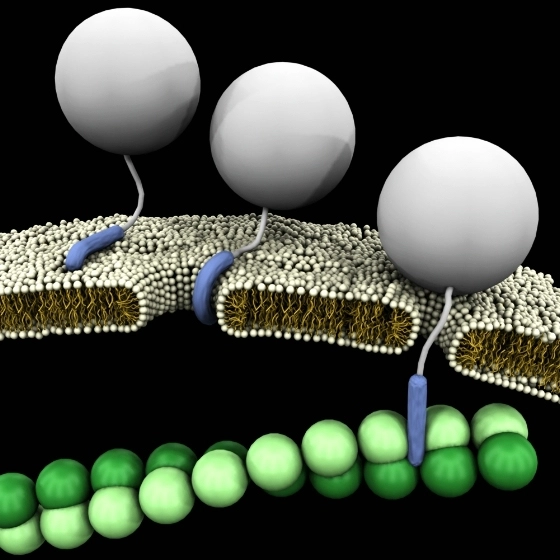
Cell Penetrating Peptides (CPPs), particularly the Trans-Activator of Transcription (TAT, GRKKRRQRRRPQ) from the Human Immunodeficiency Virus (HIV), have garnered significant attention for their ability to traverse cellular membranes. This unique property has opened new avenues in therapeutic delivery, making TAT peptides a focal point of research in drug development and molecular biology.
Key Takeaways:
- TAT peptides are a subset of cell-penetrating peptides that facilitate the delivery of various molecular cargoes across cell membranes.
- They are derived from the HIV-1 TAT protein, known for its potent cell penetration capability.
- TAT peptides have been utilized in delivering therapeutic molecules, including proteins, nucleic acids, and nanoparticles, into cells.
Introduction to TAT Peptides
What are TAT Peptides?
TAT peptides are short sequences derived from the TAT protein of HIV-1, capable of penetrating cellular membranes to deliver cargo molecules into cells.
Mechanism of Action
The exact mechanism by which TAT peptides enter cells is still under investigation, but it is believed to involve direct translocation through the plasma membrane or endocytosis.
Applications of TAT Peptides
Therapeutic Delivery
TAT peptides have been explored for their potential to deliver therapeutic agents, including drugs, proteins, and genetic material, directly into cells, overcoming the limitations of traditional delivery methods.
Research and Diagnostic Tools
In research, TAT peptides are used to introduce markers, probes, or other molecules into cells to study cellular processes or for diagnostic purposes.
For more information on peptide-based therapies and CPPs, explore LifeTein’s services.
Advantages of Using TAT Peptides
Enhanced Delivery Efficiency
TAT peptides can increase the intracellular concentration of therapeutic agents, enhancing their efficacy.
Broad Applicability
Their ability to deliver a wide range of cargoes makes TAT peptides versatile tools in both research and therapy.
Minimal Cytotoxicity
TAT peptides are generally non-toxic, making them suitable for delivering therapeutic agents without adverse effects.
Challenges and Considerations

Cargo Size Limitation
The cargo size that TAT peptides can effectively deliver is limited, affecting the range of applications.
Cellular Uptake Variability
The efficiency of cellular uptake via TAT peptides can vary between cell types and under different conditions.
Immunogenicity and Stability
While TAT peptides are generally non-immunogenic, modifications to improve stability or reduce potential immune responses may be necessary for therapeutic applications.
Recent Advances in TAT Peptide Research
Targeted Delivery Systems
Innovations in TAT peptide conjugation have led to more targeted delivery systems, increasing the specificity and reducing potential off-target effects.
Discover the potential of TAT peptides in drug delivery at LifeTein’s peptide synthesis services.
Combination Therapies
TAT peptides are being explored in combination with other therapeutic agents to enhance treatment efficacy and overcome drug resistance.
Frequently Asked Questions
- What makes TAT peptides unique among CPPs?
- TAT peptides are distinguished by their origin from the HIV-1 TAT protein and their proven efficiency in translocating across cellular membranes.
- Can TAT peptides deliver cargo to all cell types?
- While TAT peptides can penetrate a wide range of cells, efficiency may vary depending on the cell type and the nature of the cargo.
- Are there any clinical applications of TAT peptides?
- TAT peptides are primarily used in research settings, but ongoing studies are exploring their potential in clinical applications, including drug delivery and gene therapy.
For further exploration of TAT peptides and their applications, consider the comparative study on the immunogenicity of cytotoxic T cell epitopes delivered by TAT and other CPPs (read the study).
Brooks, N., Esparon, S., Pouniotis, D., & Pietersz, G. (2015). Comparative Immunogenicity of a Cytotoxic T Cell Epitope Delivered by Penetratin and TAT Cell Penetrating Peptides. In Molecules (Vol. 20, Issue 8, pp. 14033–14050). MDPI AG. https://doi.org/10.3390/molecules200814033